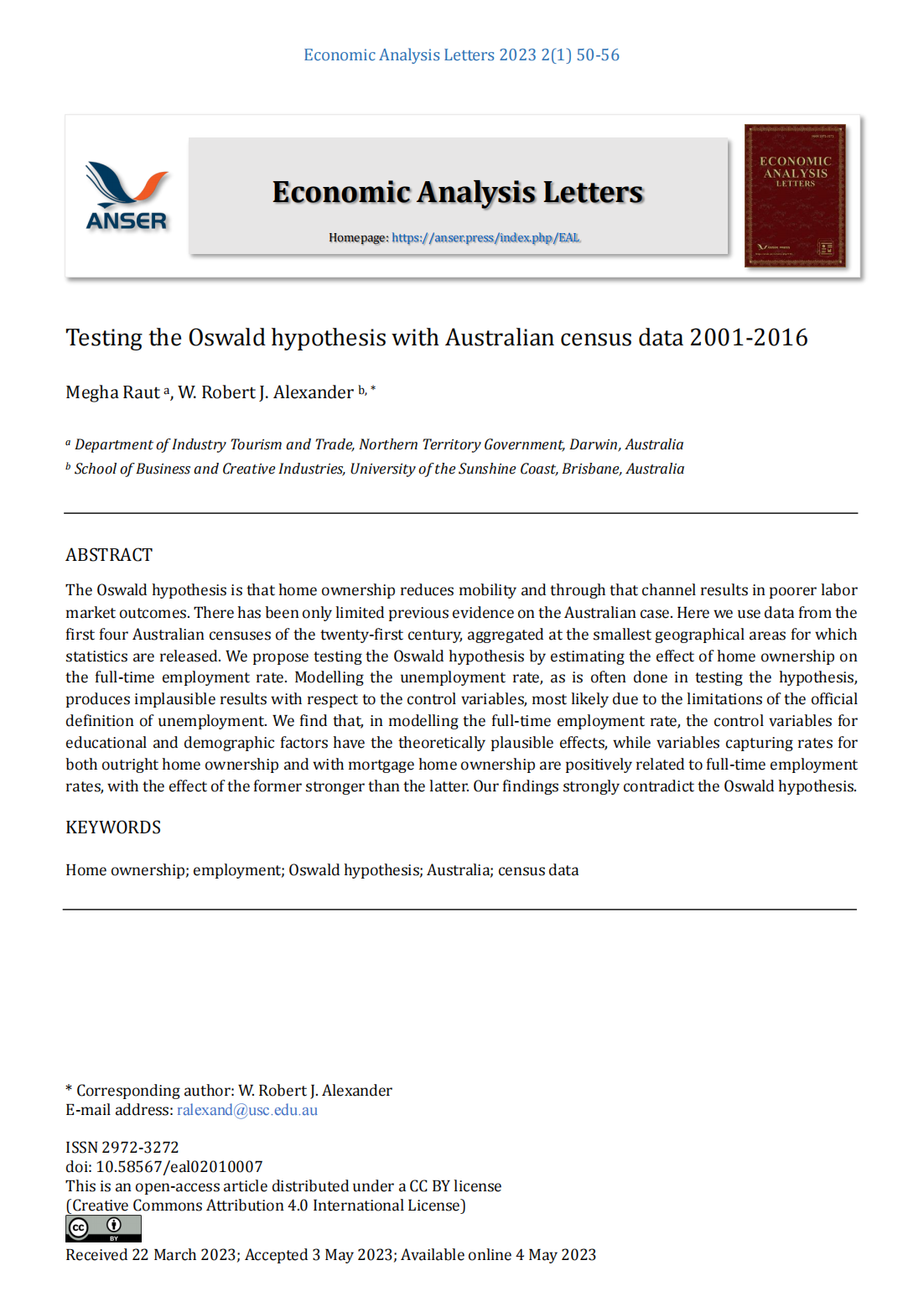Testing the Oswald hypothesis with Australian census data 2001-2016
DOI:
https://doi.org/10.58567/eal02010007Keywords:
Home ownership, employment, Oswald hypothesis, Australia, census dataAbstract
The Oswald hypothesis is that home ownership reduces mobility and through that channel results in poorer labor market outcomes. There has been only limited previous evidence on the Australian case. Here we use data from the first four Australian censuses of the twenty-first century, aggregated at the smallest geographical areas for which statistics are released. We propose testing the Oswald hypothesis by estimating the effect of home ownership on the full-time employment rate. Modelling the unemployment rate, as is often done in testing the hypothesis, produces implausible results with respect to the control variables, most likely due to the limitations of the official definition of unemployment. We find that, in modelling the full-time employment rate, the control variables for educational and demographic factors have the theoretically plausible effects, while variables capturing rates for both outright home ownership and with mortgage home ownership are positively related to full-time employment rates, with the effect of the former stronger than the latter. Our findings strongly contradict the Oswald hypothesis.
References
ABS, 2016. Australian Statistical Geography Standard (ASGS): Volume 1 - Main Structure and Greater Capital City Statistical Areas, July 2016.
ABS, 2021a. Australian Statistical Geography (ASGS) Edition 3 – Mesh Blocks.
ABS, 2021a. Australian Statistical Geography (ASGS) Edition 3 – Statistical Area Level 2.
Broulíková, H.M., Huber, P., Montag, J. and Sunega, P., 2020. Homeownership, mobility, and unemployment: evidence from housing privatization. Journal of Housing Economics, 50, p.101728. https://doi.org/10.1016/j.jhe.2020.101728
Flatau, P., Forbes, M., Wood, G., Hendershott, P. and O’Dwyer, L., 2002. Home ownership and unemployment: does the Oswald thesis hold for Australian regions (Working Paper 189). School of Economics, Murdoch University
Flatau, P., Forbes, M. and Hendershott, P., 2003. Homeownership and Unemployment: The Roles of Leverage and Public Housing (Working Paper 10021). National Bureau of Economic Research.
Oswald, A.J., 1996. A Conjecture on the Explanation for High Unemployment in the Industrialized Nations (Economic Research Papers 268744). Department of Economics, University of Warwick.

Downloads
Published
How to Cite
Issue
Section
License
Copyright (c) 2023 Megha Raut, W. Robert J. Alexander

This work is licensed under a Creative Commons Attribution 4.0 International License.